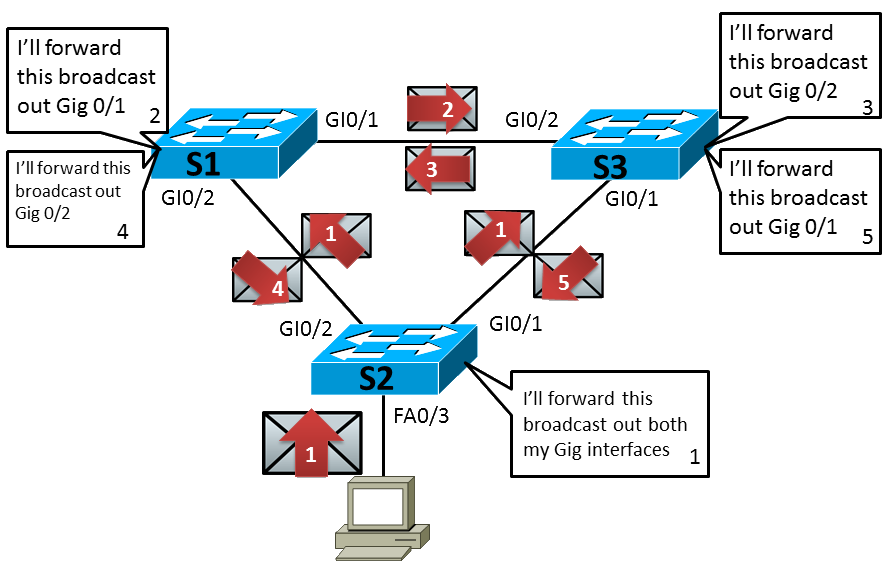The Middle of Layer Two Redundancy
In the month of August I talked about the "beginnings" of layer two redundancy mainly looking at the basic foundations and fundamentals of having layer two redundancy. Let's continue are discussion about redundancy in the layer two environment. To review what STP does (Spanning Tree Protocol) it works at layer two of the OSI model. If more than one path is available in the network the STP algorithm basically shutdowns the redundant links until the active link is unavailable (shutdown, disabled, etc.) So although there are multiple links connected physically to offer redundancy, logically the switches in the network only see one path that Ethernet frame can travel. Remember without STP networks would be on the fritz when we introduce redundancy in the environment. STP or IEEE 802.1D is an open standard so it is not just on Cisco equipment but others as well which helps in a multivendor situation. So how does looping occur without the use STP? Looking at the picture below we can see the broadcasts frames are flooding the network which is by design but the thing that changes is these broadcasts will continue to flood the network because there is on TTL (Time-To-Live) on the data link layer of the OSI model. As more packets are passed and created the network will become slower and slower and eventually devices on the network will become unavailable this called a broadcast storm. [caption id="attachment_1534" align="aligncenter" width="584" caption="STP Loop Example (Broadcast Storm)"]

Related articles
- The Beginnings of Layer Two Redundancy (lewiryan.github.io/ciscoskills)
- Belt and braces stop the network falling down (go.theregister.com)
- Resiliency and Redundancy - NOT the same (avaya.com)
- Cisco Nexus vPC Configuration and Spanning-Tree Elimination (techbookshelf.com)
- Cisco Discovery Protocol (lewiryan.github.io/ciscoskills)
Comments:
Ryan -
Steve do you have any questions? Ryan
#### [Steve]( "svu@uppertraining.com") -
Awesome Site. Ryan can you please contact me.
#### [Welcome CCT (Cisco Certified Technician Certification) | Cisco Skills](http://lewiryan.github.io/ciscoskills/2011/09/21/welcome-cct-cisco-certified-technician/ "") -
[...] The Middle of Layer Two Redundancy (lewiryan.github.io/ciscoskills) [...]
#### [The “Ending” of Layer Two Redundancy | Cisco Skills](http://lewiryan.github.io/ciscoskills/2011/09/14/the-%e2%80%9cending%e2%80%9d-of-layer-two-redundancy/ "") -
[...] Post navigation ← Previous [...]
#### [Store-and-Forward vs. Cut-Through Switching | Cisco Skills](http://lewiryan.github.io/ciscoskills/2011/10/05/store-and-forward-vs-cut-through-switching/ "") -
[...] The Middle of Layer Two Redundancy (lewiryan.github.io/ciscoskills) [...]